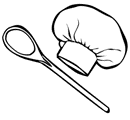Curried oat pilaf, attempt #2
I'm trying a second time to produce a sweet oat pilaf. By pilaf I simply mean a dish where the oats are neatly loose from one another instead of sticking together in a poridgy mass. I have read some buckwheat kasha recipes where the buckwheat was first mixed with beaten egg to coat the kernels and then heated in a frying pan with the goal of keeping them separate. That will be my approach this time. This would probably work better in the oven, but I'm currently in Russia with an oven that cannot be controlled precisely, so I'm going to work on the stove top.
- 2 cups whole oat groats
- 2 eggs, beaten
- 5 cups boiling water
- 4 small onions, coarsely chopped
- Vegetable oil, neutral tasting (not olive), enough to cover the bottom of the frying pan
- 4 medium cloves of garlic, sliced
- 1 tbsp curry powder
- 1 tsp black pepper
- About a tsp of salt
- 1 banana, sliced
- 1/2 pound of golden brown (not yellow) raisins. This was really three handfuls; I have big hands.
Method
- First I beat an egg. Mixed in 1 cup of oats. Mixed so that every grain was coated. Heated the mixture in a medium frying pan (with a heavy bottom) over lowish heat with the goal of cooking the egg and separating every single grain. By the time the first batch was done, the egg was leaving a residue in the bottom of the pan that was beginning to turn brown. I hate brown egg mass. Scrubbed out the pan. Repeated the process with the second cup of oats and the second egg. Scrubbed out the pan again.
- Then I added the vegetable oil to the bottom of the pan and added the chopped onions. When they were approaching translucency, I added the garlic, then the curry powder, then pepper. Cooked briefly.
- Added the boiling water. Added the oats. Roughly evened them out in the pan. Added the raisins. Added the bananas on top. Sprinkled with the salt. (Next time do the salt before the raisins and bananas.)
- Covered the pan. Put the flame to the smallest level possible. Intended to let it cook for 50 minutes.
Now the processs of watching begins, since this is an experiment...
- 45 minutes into the process this stuff is smelling freakin' great.
- 50 minute check. Still smells freaking great. Water still remaining. Oats from the bottom of the pan already edible. Should have checked the oats on the side as well, but I didn't. Taste... can't tell yet, hard to say. I'll give it ten more minutes.
- 60 minute check. Side oats are also ready. Still too much water in the mess, so I'm removing the lid. Next time I'm thinking 4 cups of water might be sufficient.
- 70 minute check. Yup, 5 cups was too much. Next time four cups. For now I'll leave it be to get rid of more liquid. If that doesn't work, I'll eat it watery.
- 80 minute check. Still too watery, but I don't want to cook it anymore. I have turned off the flame and will let it simply vent to the air. We'll see what it is like in 20 minutes.
Results and commentary
- First off, in terms of keeping the grains separate this approach was a complete and total success. In fact, it was so successful that I'm wondering if my original premise was wrong. Maybe when using whole oats you don't have to worry so much about the grain turning into a goopy mass. Next time around I'll use only 4 cups of water.
- Flavor-wise this turned out great.
- I had worried that the dish would burn for a couple reasons. First off, oat porridge made with flakes burns easily if there is too little water. Secondly, the addition of banana makes it burn more easily. This time around there was no burning issue whatsover. When I use less water next time, I'll have to keep my eyes open more carefully just to make sure.
- Next time around I'll try to make a savory pilaf with some kind of meat.
I think that cooks avoid whole oats because they take a long time to cook. Now that I know how easy they are to cook, I won't avoid them in the future. The boiling water plus low flame approach worked great.
